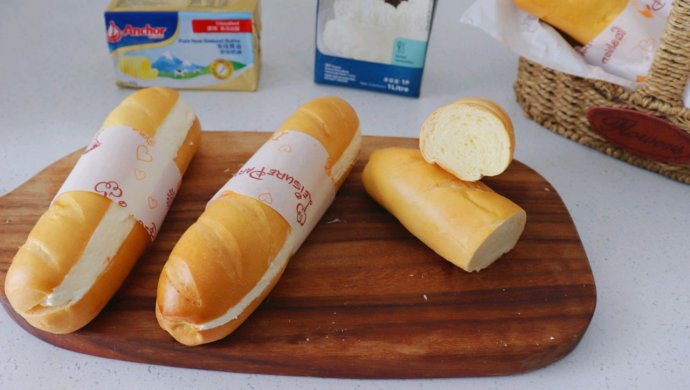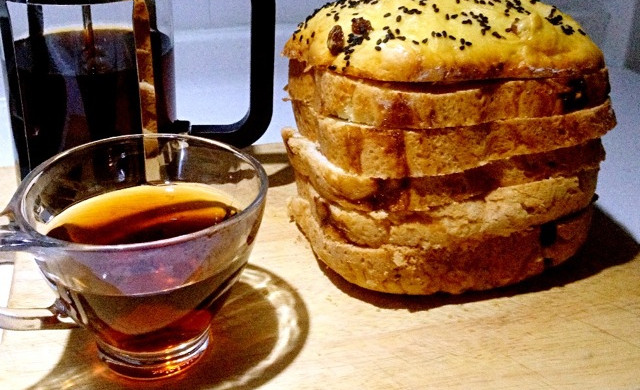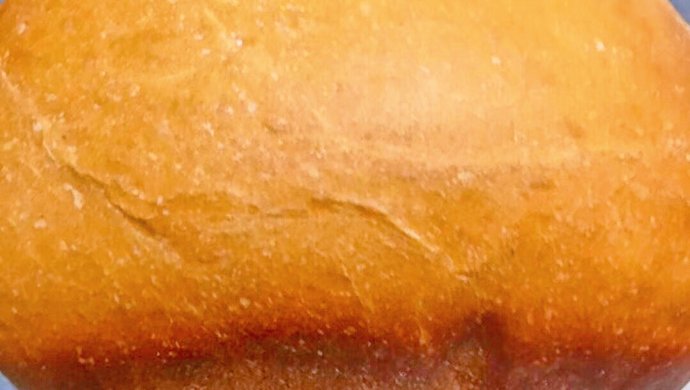Ingredients for Vienna Bread: T65 bread flour (use regular high-gluten flour if unavailable) 420g, eggs 40g, caster sugar 25g, milk 235g, milk powder 18g, salt 6.5g, yeast 4g, butter 30g, heavy cream (for filling) 250g, caster sugar (for filling) 15g.
Method:
Step 1: Except for the butter, place all the ingredients into the mixer bowl and knead until the dough reaches the expansion stage, then add the butter and continue kneading until the dough is fully developed. This bread does not require a very thin gluten membrane.
Step 2: After kneading, round the dough and cover with plastic wrap, then place it in a warm and humid environment at about 25-28 degrees for the initial fermentation. The dough should double in size to approximately 1.5 times its original volume. A finger poke test should show no immediate rebound or collapse, with a very slight rebound at the bottom being acceptable, especially in hot weather.
Step 3: After the first fermentation, degas the dough by gently pressing out the large air bubbles. Divide the dough into 8 equal parts and let them relax for 15-20 minutes.
Step 4: Take one relaxed piece of dough and flatten it with your palm. Roll it out into a rectangular shape using a rolling pin.
Step 5: Roll the dough from top to bottom, ensuring the pressure is moderate during the rolling process.
Step 6: After rolling, gently elongate the dough, being mindful of the pressure to ensure uniformity and avoid areas that are thick in some places and thin in others.
Step 7: After shaping, make a few incisions on the surface of the bread. This bread is scored before the second fermentation.
Step 8: Begin the second fermentation. Today, instead of using a proofing box, I used the oven’s second shelf for direct fermentation. Turn on the oven’s fermentation function and set it to 35 degrees. If the oven does not have humidity control, place a bowl of warm water to maintain humidity. If fermenting in the oven, it only takes 35-40 minutes, as the oven needs to be preheated. Observe the dough’s condition, ensuring it has elasticity when lightly pressed.
Step 9: Preheat the oven to 180 degrees in convection mode. If using a home oven that bakes one layer at a time, preheat to 200 degrees. While the oven is preheating, the bread will continue to ferment. Brush the surface of the bread with egg wash, which is taken separately and not included in the recipe.
Step 10: Place the bread in the fully preheated convection oven and bake at 160 degrees for 20 minutes. For home ovens that bake one layer at a time, use 170-180 degrees. Times and temperatures are approximate; adjust according to your oven’s specifications.
Step 11: The bread is baking.
Step 12: After baking, transfer the bread to a cooling rack and let it cool until it is slightly warm. Then, seal it in a bag for storage.
Step 13: Place the heavy cream and caster sugar in a large bowl and whip until about 90% whipped, making it as firm as possible. This will support the bread’s structure and prevent it from collapsing when used as a filling.
Step 14: Pipe the whipped cream into the bread. Vienna cream bread is perfect for summer consumption. The weather is still hot, so everyone can start making it! We use Anchor butter and Anchor cream, which give a very rich milk flavor.
Step 15: A large basket of deliciousness. If you are using a small home oven that bakes one layer at a time, you can halve the operation.
Vienna bread cooking tips: Many friends say: I followed the recipe exactly, why is mine wet? Why is mine dry? Why… why… When making bread, it is essential to flexibly control the liquid in the recipe because the water absorption of flour varies, and the climate, temperature, and humidity in different regions are also different. Always adjust based on the state of the dough. This is a frequently discussed topic! Adjust the time and temperature according to your oven’s actual conditions. There is a significant difference between large and small ovens, and even two identical ovens of the same brand can have temperature differences.
Cooking delicious dishes has its tricks, and each of my dishes has a little secret. You can search for ‘bread’ to directly view my recipes!


